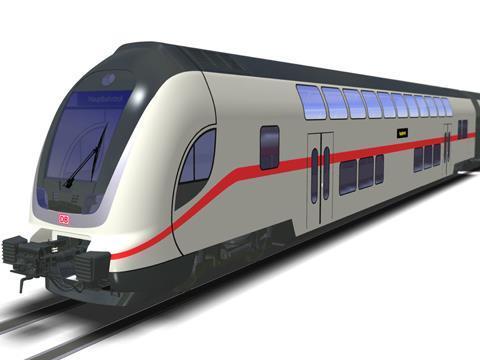Austria is set to welcome the long-delayed double-deck trains manufactured by Chinese rail giant CRRC, marking a significant milestone in the country’s public transport sector. Despite facing extensive criticism from industry experts and political voices over concerns related to quality, security, and domestic industry impact, these new rolling stock units are poised to enter service on key regional routes. The deployment of CRRC’s double-deck trains comes amid ongoing debates about balancing cost-efficiency with national manufacturing priorities, spotlighting the wider challenges faced by European rail operators in modernizing their fleets.
Double-deck CRRC Trains Set to Revolutionize Austrian Rail Network Despite Industry Concerns
Austria’s rail network is on the brink of transformation with the imminent introduction of double-deck trains manufactured by CRRC. Designed to increase passenger capacity significantly without expanding train length, these modern units promise to alleviate congestion on heavily trafficked routes. Key features include energy-efficient propulsion systems, spacious interiors optimized for commuter comfort, and enhanced accessibility standards. The deployment of these trains is expected to improve punctuality and reduce operational bottlenecks, setting a new benchmark for regional rail transport in the country.
Despite the anticipated benefits, industry experts and local manufacturers have voiced concerns over the contract’s awarding and the source of the rolling stock. Critics argue the decision may impact domestic production and raise questions about maintenance support reliability.
- Cost efficiency: Some worry that the price advantage could undercut local suppliers
- Technical compatibility: Questions remain on integration with existing infrastructure
- After-sales support: Concerns over spare parts availability and service networks
Nevertheless, operators remain confident that the trains will deliver on their promise, marking a critical milestone in Austria’s commitment to sustainable and high-capacity rail solutions.
| Specification | Detail |
|---|---|
| Capacity | ~1,200 passengers |
| Max Speed | 160 km/h |
| Energy Type | Electric (AC overhead line) |
| Entry Year | 2024 |
| Manufacturer | CRRC Corporation |
Analyzing the Challenges Behind the Delayed Deployment of CRRC Rolling Stock in Austria
The prolonged introduction of CRRC’s double-deck trains into the Austrian rail network has spotlighted a series of complex challenges, blending regulatory, technical, and political factors. Austrian authorities faced hurdles ranging from the stringent certification processes required to meet rigorous EU rail safety standards to unforeseen technical discrepancies between the rolling stock and Austria’s existing infrastructure. Additionally, adjustments in signaling systems and platform heights necessitated costly modifications, further slowing deployment. Industry insiders also reveal that administrative delays, coupled with evolving environmental compliance measures, contributed to a timeline that stretched well beyond initial projections.
Key factors delaying the rollout can be summarized as:
- Incompatibility with legacy rail signaling technology
- Extended safety validation and quality assurance protocols
- Contractual disputes involving maintenance responsibilities
- Political resistance from local stakeholders concerned about foreign manufacturing
| Challenge | Impact | Duration |
|---|---|---|
| Certification Delays | Testing and approvals extended | 12 months |
| Technical Modifications | Infrastructure upgrades needed | 9 months |
| Political Resistance | Slowed decision-making | 6 months |
| Contractual Disputes | Maintenance delays | 4 months |
Recommendations for Addressing Quality and Safety Criticisms Ahead of Full Service Launch
To effectively mitigate lingering concerns surrounding the CRRC double-deck trains, Austrian operators are prioritizing a multifaceted approach focusing on enhanced quality assurance protocols and rigorous safety validations. Among the key initiatives are comprehensive stress testing under varied operational conditions and real-time monitoring systems integrated into the train’s core infrastructure, designed to detect anomalies before they escalate. Furthermore, engagement with third-party safety auditors aims to ensure transparency and build public trust ahead of full deployment.
Critical recommendations include:
- Implementation of advanced predictive maintenance technologies to reduce unexpected faults.
- Conducting exhaustive staff training programs tailored to double-deck train operations.
- Regular communication of safety performance metrics to stakeholders and the public.
| Action Item | Responsible Party | Timeline |
|---|---|---|
| Stress Testing Completion | Engineering Team | Q2 2024 |
| Third-party Safety Audit | Independent Inspectors | Q3 2024 |
| Operator Training Rollout | Operations Department | Q2-Q3 2024 |
The Way Forward
As the double-deck CRRC trains prepare to enter service in Austria, the railway industry watches closely. While these new units promise increased passenger capacity and modern features, lingering criticism over procurement transparency and geopolitical concerns continues to shadow their introduction. How the trains will perform in daily operations and whether they can meet both passenger expectations and regulatory standards remains to be seen. This development marks a significant moment for Austria’s rail sector amid the evolving landscape of international rolling stock suppliers.
















